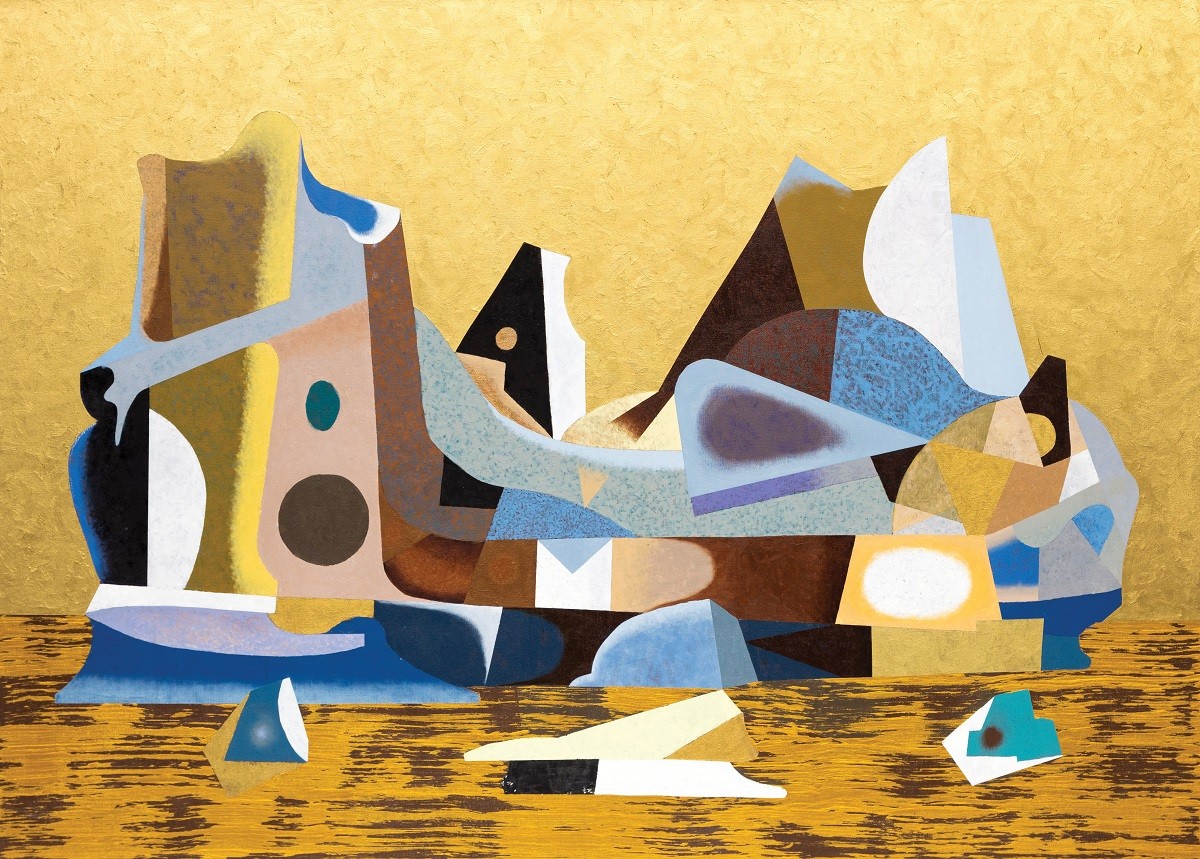For his most recent exhibit at the Daniel Faria Gallery in Toronto, Coupland—who’s known for bringing technology into his canvases and installations—did something he had never done before: He created a group of paintings on canvas, all done entirely by hand. The result is The New Ice Age, a series which references works from the Group of Seven—a revered community of 20th-century Canadian landscape painters—while exploring issues of climate change, retro pop culture and mortality. During a quick break from painting his next collection, Coupland spoke to Experience about his current artistic motivations.
For those who were coming of age in the 1990s, writer, designer and visual artist Douglas Coupland was considered a cultural prophet following the release of his debut novel, Generation X: Tales for an Accelerated Culture. It was then that the German-born, Vancouver-raised multihyphenate popularized the now-iconic nomenclature for the cohort of people born between the mid-1960s and 1980. Over the next three decades, Coupland went on to publish 14 novels alongside collections of short fiction and non-fiction, and has manifested his signature wit and boyish wonder in more than 20 exhibitions of visual art worldwide. His diverse works in public spaces have broken all kinds of records—his 2009 aluminum and stainless steel sculpture titled Digital Orca, which sits beside the Vancouver Convention Centre, is one of the most photographed works of art in Canadian history. Honors such as being made a member of France’s Ordre des Arts et des Lettres and an Officer of the Order of Canada have followed but they have not slowed him down. For his most recent exhibit at the Daniel Faria Gallery in Toronto, Coupland—who’s known for bringing technology into his canvases and installations—did something he had never done before: He created a group of paintings on canvas, all done entirely by hand. The result is The New Ice Age, a series which references works from the Group of Seven—a revered community of 20th-century Canadian landscape painters—while exploring issues of climate change, retro pop culture and mortality. During a quick break from painting his next collection, Coupland spoke to Experience about his current artistic motivations.
What was the impetus for The New Ice Age?
Sadly, my mom died, and I took stock of life and realized that there’s no real work I’ve released out into the world that came directly from my brain through my central nervous system. This means no work which was made from my hand with a paintbrush onto a surface. If someone important in your life is gone, you’re obviously going to change, and you just don’t know what that change is going to be. I was 60 and instead of traveling as much as I did—I used to do around 10,000 miles a month—I stayed put and worked in the studio and painted.
Like this show, so much of your past work also references icebergs. Why have they been such a longtime fascination of yours?
They’re attached to parental memories. I’ve been doing these tessellated Group of Seven pieces for a long time but never like this or with this kind of intimacy. I returned to them after I was flying back from Munich and saw icebergs as I was going over Greenland. My dad was a fighter-jet pilot in the Air Force and when he went to civilian, he had a few float planes, which he leased out to local port-based airlines. We’d go up the coast and get to Alaska and we’d see glaciers calving and leave big icebergs. Seeing them up close feels like nothing else. Doing this series also made me think of working with Lawren Harris’s work too.
In your artist’s statement, you mention that you feel the world’s icebergs are all under a spell. Are these new paintings a way to understand, reverse or broadcast the spell?
All three. I always like to say, there are a lot of pieces I create which represent a kind of toxic beauty in them. They are like poison candy. I think that the ones that were in the show bring that spell to the surface and make people acknowledge what’s going on with climate issues. Instead of talking about the elephant in the room, you can look at the painting and see the elephant in the room.





